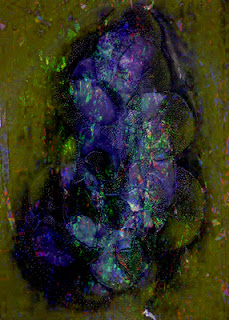Saturday, 21 November 2020
Saturday, 14 November 2020
The Dogon's Extraordinary Knowledge of the Cosmos and the Cult of Nommo
The Dogon’s Extraordinary Knowledge of the Cosmos and the Cult of Nommo
Source: Acient Origins
France, 1920: Marcel Griaule is a young man who is very well-established in his studies, especially in mathematics. He has recently served as a volunteer in the French Air Force and aspires to attend the prestigious Lycée Louis le Grande.
Although his future already seems marked, fate has other plans for him - a new road that begins to take shape when he decides to attend a conference that same year. The speakers are Marcel Mauss, anthropologist, sociologist, and historian of religions, and Marcel Cohen, linguist.
Griaule is struck by their words and decides to devote himself entirely to the study of anthropology. Between 1928 and 1933 he took part in two ethnographic expeditions, and in this period (1930) he came into contact with a mysterious African tribe: the Dogon.
- Did Ancient Aliens Impart Advanced Astronomical Knowledge to the Dogon Tribe?
- Those Who Once Reigned: Experts Name Famous and Forgotten Ancient Gods
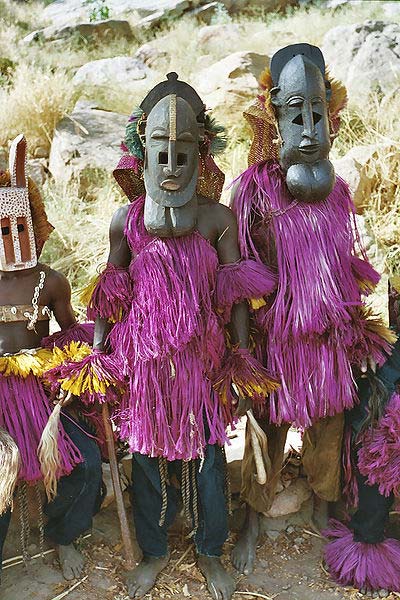
Dogon men in their ceremonial attire. (Devriese/ CC BY 3.0 )
The opportunity was given to him during a period of study in Mali alongside his pupil Germaine Dieterlen, who was also a pupil of Mauss and deeply interested in the study of ancient myths. From that moment, the mystery of the Nommo is born. It is an element of an ancient heritage of which we cannot expand without having first spoken of the Dogon people.
One People, Many Mysteries
The Dogon are a tribe that lives in a desert land of Mali, near the border with Burkina Faso. It is a place that welcomed them after their escape to avoid the expansionist pressures of the medieval empires…we are around the year 1000, during the fierce battles on the banks of the Niger river.
Many researchers have already discussed the range of mysteries that surround these people, but what interests us particularly for the development of the hypotheses contained in this article is their complex cosmogony, based on faith in a creative god, Amma, and in a creation produced by the movements of the “Egg of the World”.
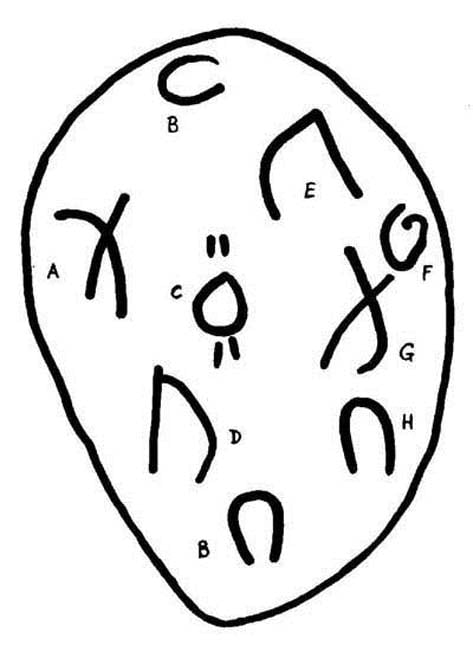
A Dogon schematic of the “egg of the world” . ( Nothing Too Trivial )
On the basis of these beliefs, the “Nommo”, the eight pro-genitors of the Dogon, brought to Earth a basket containing the clay necessary to build the grain stores of their villages. This image, which at first sight appears quite simple and devoid of particular significance, hides in reality a very profound knowledge of the universe and of the celestial bodies.
The granary represents the universe, its scales symbolize both the males and females that generated the Dogon and the various stars and constellations: in this sense we will find the Pleiades in the north, Orion in the south, and a comet in the west. So, everything started with a “basket”, or container, that carried life.
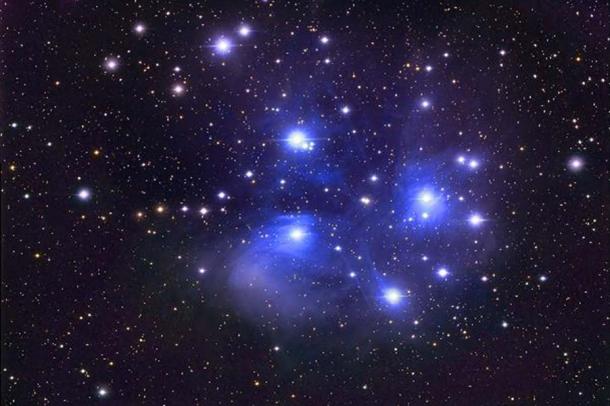
Dogon Astronomical Knowledge
But the thing that most struck the two scholars was the finding that, despite the Dogon having come into contact with our civilization in fairly recent times (about the beginning of the century), they possessed incredible scientific and astronomical knowledge. Some of this knowledge was certainly the result of a cultural heritage that is millennia old, but one element in particular has decidedly current characteristics - the detailed knowledge of the star Sirius.
The Dogon were in fact aware of the fact that Sirius is a binary system (i.e. a system consisting of two stars, Sirius A and Sirius B); they were aware of the fact that Sirius B revolves around Sirius A with an elliptical orbit and over a period corresponding to 50 years; and the most disconcerting discovery was that the Dogon knew the exact position of Sirius A within the ellipse.
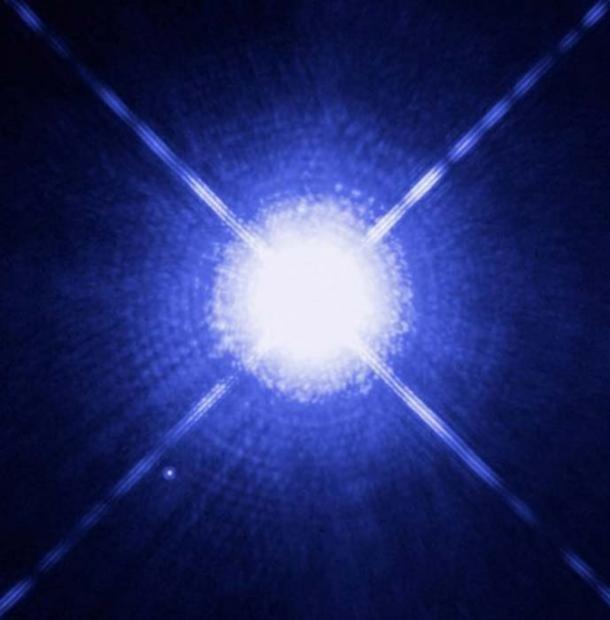
Sirius A and Sirius B as seen by the Hubble Space Telescope. The white dwarf can be seen to the lower left. (NASA, ESA, H. Bond/STScI, M. Barstow/University of Leicester/ CC BY 3.0 )
Many may wonder what is so disconcerting about all this? The amazement arises from the fact that it was only in 1862 when the American astronomer Alvan Clark deduced the existence of Sirius B using a telescope, among the most advanced for that era, and it was not before 1970 that there was confirmation of the existence of this star, not to mention a photograph of it.
Yet the Dogon knew of it hundreds of years before, and not only that, they called Sirius B with the name of “Po Tolo”; this name is certainly the most apt and shocking way to describe this system, the term Tolo, in fact, means star, while Po refers to a typical cereal that has the characteristic of being extremely heavy despite its small size; an expression, therefore, very close to reality since Sirius B is a white dwarf and, as such, has a very high density.
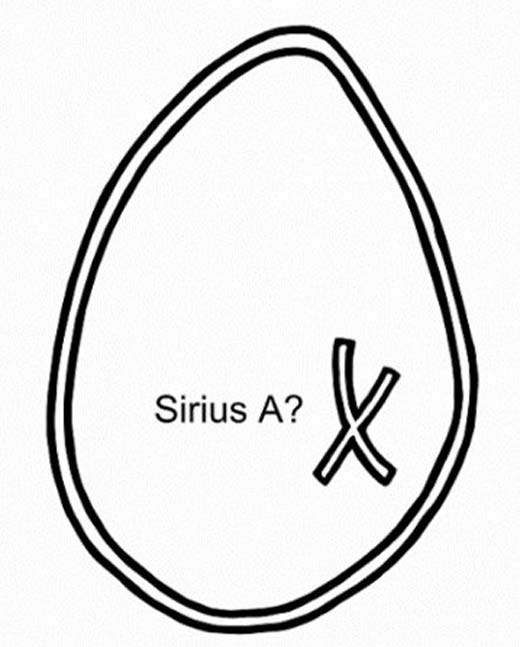
A Dogon diagram said to represent Sirius B’s elliptical orbit around Sirius A. ( CC BY SA 3.0 )
All this information is practically inaccessible without adequate astronomical equipment, and it is useless to specify that the Dogon had never come into possession of any such instrument, they even ignored its existence.
But the mystery does not end here, the Dogon, in fact, used to represent the planet Saturn as surrounded by a sort of halo, thus demonstrating that they knew of its rings; moreover, they knew that the planet Jupiter had around “four companions”, which correspond exactly to its four main moons.
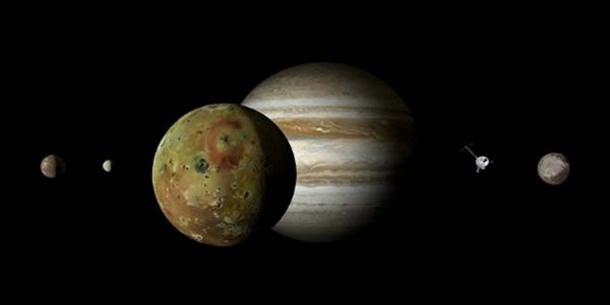
An artistic representation of Jupiter and its moons. ( CC0)
As if this were not enough, they depicted the Earth as a sphere and knew that this sphere revolves around its axis, and together with other spheres (the planets), around the sun; last, but not least, it is surprising that the Dogon, or in any case the elders of the village, described our galaxy as an immense spiral shape. We know very well that this concept began to be disclosed by Western astronomers only at the beginning of this century.
For the Dogon, Sirius B was the first star created by God and it represents the fulcrum of the Universe. All matter developed from it, including souls, following a complex spiral motion - the same that is symbolized in the intertwined baskets.
- The Miracle of the Sun, 1917: Ancient Angels at Fatima? The Possible Common Origins of Star Gods
- Did West Africans live in Four Corners Region of the United States from 12th Century?
Saturn is surrounded by rings, Jupiter has four main moons, and four calendars are used: one for the Sun, one for the Moon, one for Sirius, and one for Venus. Needless to say, that the Dogon believe a truth attested from ancient times - the fact that the planets orbit around the Sun.
The Dogon know what, logically, they should not know; their knowledge is not the result of ancient legacies acquired by observing the sky and the stars with the naked eye, as happened in other civilizations, they simply “know”; this is the most disturbing part of the Dogon mystery.
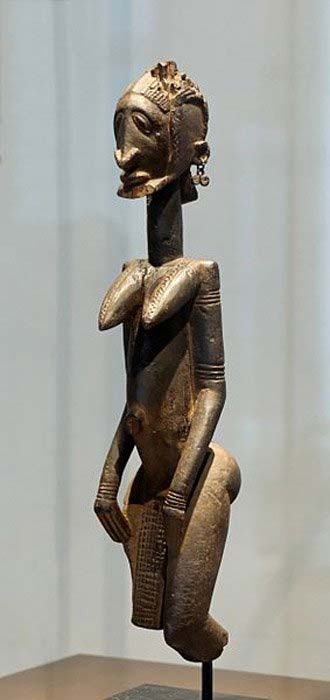
‘Master of the Slanted Eyes.’ Antropomorphic representation, probably a Dogon ancestor figure. (Public Domain )
The Nommo Cult
An old Dogon legend tells of when the God of the universe, Amma, sent the Nommo to earth. This was a half-man, half-amphibian creature which landed in the land of the Fox, a territory northeast of Bandiagara, in the Mopti region; the Nommo was red, but when it touched the ground it became white.
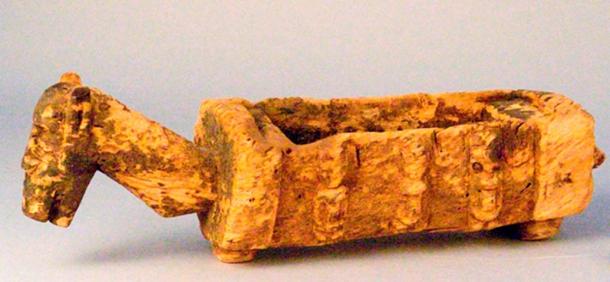
Mali, Dogon container This container shows the "Ark of the world", in which Nommo, the mythical progenitor of humanity, is supposed to have come down from the sky. ( CC BY-SA 3.0 )
The name Nommo derives from a Dogon word that translates as “to do well”; much more often, however, this is remembered as “The Master of Water” (perhaps a reference to the fact that the Nommo could not survive out of water), the Admonitor, or the Destroyer.
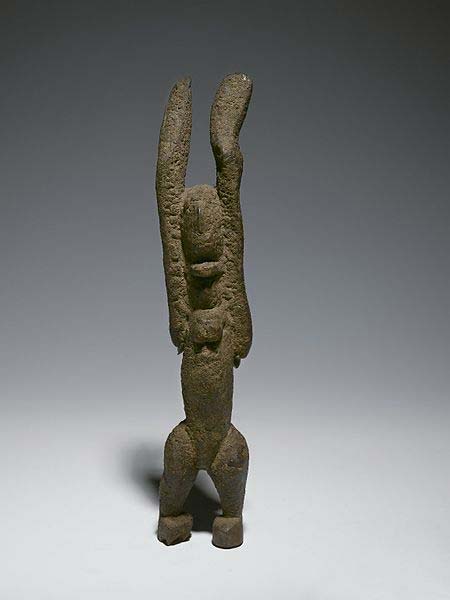
Nommo Figure with Raised Arms . (Brooklyn Museum/ CC BY 3.0 )
We do not know exactly how this figure can be placed in the various events that characterized the growth of the Dogon culture, but it is not so difficult to identify other very similar creatures in different cultures - not only geographically distant but also with respect to various historical moments.
- The ancient wonder and veneration of the dog star Sirius
- The awesome, terrible, and unknowable creator gods through history
The same type of creature is present in a history of Mesopotamia written during the III Century BC from the priest Beroso; his name was Oannes, his body was similar to that of a fish, he lived only in water, and had feet similar to those of man. Are these images referring to the same event?
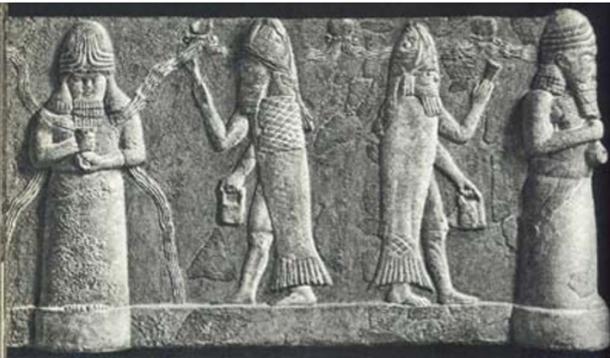
Oannes. (Dr.regosistvan/ CC BY SA 4.0 )
In any case, this ancient, almost primordial figure occupies a prominent place in all African cultures; not infrequently, for example, in the most internal areas of Africa. People belonging to monotheistic religions turn to the priests of the various villages because in situations of extreme difficulty they invoke the assistance of the Nommo.
Finally, let us not forget the God fish Dagon of the Philistines, and the same symbol of the fish which the first Christians used to represent their deity. Whoever or whatever it was, the Nommo still continues to lengthen its shadow on African territory, perhaps as a messenger waiting to be able to reveal ancient truths to those who have the courage and the predisposition of mind to listen to it.
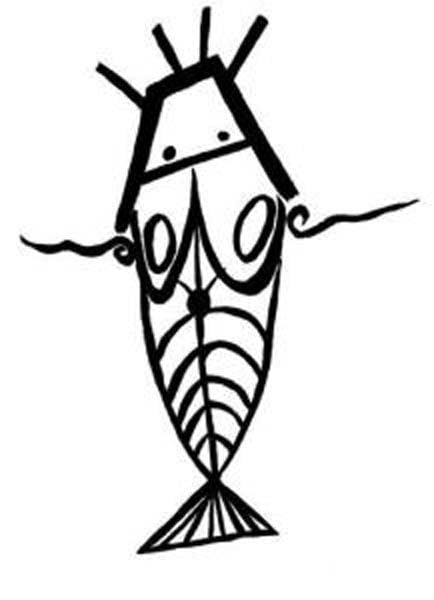
Nommo Archetype. (Nothing Too Trivial )
Top image: Dogon ritual dance, Mali. ( CC BY 2.0 )
Roberto La Paglia is a contributing writer for the magazine Veritas Arcana and this article has been republished with permission.
Saturday, 7 November 2020
BRAVE NEW WORLD by Aldous Huxley
Thinking about the importance of the Indigenous. The love of plants, the healing roots, leaves and barks of trees...We have lost our way in our Modernization of all things and we need to retreat and move backwards to see our way forwards.
I am reminded of a story I heard in Ghana when an Humanitarian Group from Outside where so worried about the children suffering from water shortages and starvation and they demanded they stepped in to assist in this CRISIS. They went to the Chiefs and said, "You need Wells, you need clean water to save your people.." and the Tribal Elders said, "We will consult with our Gods."
They consulted and came back to the Humanitarians and said, "Thank you for your concern but the Gods say we should leave you be!"
But the Humanitarians wouldn't take that from the Village Elders thinking them primitive, cruel and foolish. So they went to the Higher Powers in Government to assist...They drilled out Wells and did what they could...and for sure...those that where suffering where made better but because of the fresh water more children where born and the population grew from 100 to 2,500 and the area had not changed. Eventually, the Well ran dry because of the demand and rather than 60 people dying now 2,025 people, men, woman and children where to died because of this act of human kindness.
Listen to the Gods of Africa....
We have a responsibility of Birth Control and Death Control....This has been practiced throughout Africa with incredible success.
=========
I am keen for those throughout Africa to listen to a prophetic writer Aldous Huxley that wrote, Brave New World. This interview is so important to listen to as it seals Africa's fate if Africa is to go too quickly down the path of Commercial Development without proper risk assessments, sensible weighing up of the pros and cons, an holistic approach to African development with Western hindsight; otherwise it will be an absolute disaster. Learn from the mistakes made by those that qualify themselves as "Civilized" because now they are beginning to recognize that they have become over developed and are suffering the consequences of drug addiction, loneliness, depression, suicides and mental health issues on mass. The importance of Africa and the decisions made now will shape the world for our children, grandchildren and our tomorrow. The Power on earth lies in the hands of the Africans.
Here is another video but will take a lot of your Credit....but if you are rich in Africa check it out.
Saturday, 17 October 2020
Cockatoo by Joe Pollitt
 |
| Cockatoo by Joe Pollitt | 2020 |
Cockatoo
In the foreground a nervous bobbing, large, white feathered, Cockatoo, gyrates backwards and forwards. Perfectly balanced on a weathered moss-infested farmhouse gate. The striking yellow plumage on the top of the head and neck rises, like a wave in the Pacific; the white froth, having been touched by the waning sun, creates the illusion of a freshly made lemon sliced omelette. All of a sudden the direction changes and so begins the bouncing; up and down, like a lone basketball in a well-oiled gym. The thuds of boom, boom, boom on the clean wooden floor. Watching these trance-like Cockatoo practices has somehow, become somewhat, hypnotic...Sleezzpp.
The strong talons grip to the rotting wood, holding onto the frame, perched on the sturdy far post. This firm grasp allows for a tiresome rocking movement, like a pyramid tempo on an upright piano. This rhythmical dance is an omen, an anxious preparation for the harsh months to come. This lively scene appears rather familiar, religious even, insinuating a ritualistic call for Prayer. A BIG shout-out for our weekly rations of consideration. Willing the world to go backwards in order to move forward.
The Cockatoo appears restless, lost in a daze in the unusual
surroundings of the rows of moulting silver birch; their white barks slowly
peeling away from the main, like tree-snakes. The sight is breath-taking! The
painful shedding of wooden skin framed against the brightness of the
illuminated forest. Beams of light
stream through thin and thick naked branches, the leaves of which, have long since fallen.
Their purpose reassigned, transformed into muddy fertilizer underfoot, as
autumn arrives in earnest. Snap! You're back in the room.
Listening to MALAA in SEINE, PARIS..
*N.B. 17/10/2020 Robert Blease 50th.
https://www.youtube.com/channel/UCQdCIrTpkhEH5Z8KPsn7NvQ
Cacatoès
Au premier plan, un cacatoès nerveux, à grandes plumes blanches, tournoie d'avant en arrière. Parfaitement équilibré sur une porte de ferme infestée de mousse patinée. Le plumage jaune frappant sur le dessus de la tête et du cou s'élève, comme une vague dans le Pacifique; la mousse blanche, touchée par le soleil décroissant, crée l'illusion d'une omelette en tranches de citron fraîchement préparée. Tout d'un coup, la direction change et ainsi commence le rebond; de haut en bas, comme un ballon de basket solitaire dans une salle de sport bien huilée. Les bruits de boum, boum, boum sur le parquet propre. Regarder ces pratiques de cacatoès ressemblant à de la transe est en quelque sorte devenu hypnotique ... Sleezzpp.
Les fortes serres s'agrippent au bois en décomposition, s'accrochant au cadre, perché sur le solide poteau éloigné. Cette prise ferme permet un mouvement de bascule fastidieux, comme un tempo pyramidal sur un piano droit. Cette danse rythmée est un présage, une préparation anxieuse pour les mois difficiles à venir. Cette scène vivante apparaît plutôt familière, religieuse même, insinuant un appel rituel à la prière. Un GRAND merci pour nos rations hebdomadaires. Vouloir que le monde recule pour avancer.
Le cacatoès semble agité, perdu dans un état second dans l'environnement inhabituel des rangées de bouleaux argentés en mue; leurs écorces blanches se détachent lentement du corps principal, comme des serpents arboricoles. Le spectacle est à couper le souffle, l'effritement douloureux de la peau de bois encadrée par la luminosité de la forêt illuminée. Des faisceaux de lumière traversent des branches nues minces et épaisses, dont les feuilles sont tombées depuis longtemps. Leur but est réaffecté, transformé en engrais boueux sous les pieds, alors que l'automne arrive sérieusement. Casser! Vous êtes de retour dans la salle.Sunday, 13 September 2020
Ernest Duku in Le Monde Afrique

Original in French | Le Monde Afrique
Ivory Coast: in Abidjan, the world of contemporary art is booming The network of galleries and foundations expands each year in the Ivorian economic capital, such as the very young Galerie Véronique Rieffel, represented at the Art Paris fair.
Multiple Galleries
This place will complete the network of galleries and foundations that stretches each year along the edge of the Ebrié lagoon. In March, the country's first contemporary art museum opened in the popular commune of Abobo, north of Abidjan. It was financed and built by Adama Toungara, a public official who is also one of the country's largest private collectors.
While contemporary art showcases are multiplying in Abidjan - there are now around ten - the local market is also developing. In the absence of reports or quantified studies, all professionals in the field interpret the slightest signals as confirmation of a growing market. "The occasional or permanent return of Ivorian artists is a sure sign," says Mimi Errol, artistic director of the Houkamy Guyzagn gallery and one of the only art critics and curator in the country.
Read also Important sale of contemporary African art in Paris
The critic cites Ouattara Watts as an example, the prodigal son who left to live in the United States some thirty years ago and returned in 2018 for an exhibition. His compatriots, the sculptor Jems Robert Koko Bi and the visual artist Ernest Dükü, have also initiated returns, confirming the existence of market outlets for their productions.
In fact, during the 2018 exhibition, Ouattara Watts's works sold well, at prices ranging from 40,000 to 120,000 euros depending on the piece. "Some of her works were acquired by local collectors", confides Cécile Fakhoury, who hosted the exhibition in her gallery opened in 2012. Accustomed to major international art meetings, the young French gallery owner, who represents many numerous Ivorian and West African artists, has a second gallery in Dakar and a showroom in Paris. The first years, 90% of its turnover was made abroad but, today, she specifies, "without being at 50/50, there is an important rebalancing which took place" . And if there is no boom, "the upward trend in the local market is evident."
While the market is growing, its dynamism remains to be confirmed over time. To increase its notoriety, should an international event be organized in Abidjan? "Too early, the market is not yet mature enough," says a collector accustomed to great artistic raids. And a biennial? "The one in Dakar is very good and does the job," he adds, a little jaded. Other industry professionals, more enterprising and enthusiastic, are nevertheless planning an international auction in the coming months.
For Mimi Errol, a fine connoisseur of the field, “for ten years, the market has grown organically, gradually and resiliently despite political and health crises”. Better, Abidjan manages to "bring back its artists, to keep the youngest and to attract those from the sub-region", rejoices the art critic behind his desk. "But we have to move slowly, otherwise there is a great risk of seeing young artists giving in to the sirens of the market to the detriment of the creativity that is the soul of Abidjan," he adds.
Yassin Ciyow (Abidjan) ~ Superbe, Merci Beaucoup.
Thursday, 10 September 2020
Sam Kassan | Voodoo Artist from Togo
Artist: Sambiani Kassan
Date of Birth: 9th May 1961
Country: The Republic of Togo
City: Lome
Contact: +228 9025 7439
Sanctuaire de l afrique ou memoire d un u continent | Sambiani Kassan
Space for a description on materials used, size and technique.
Paintings












